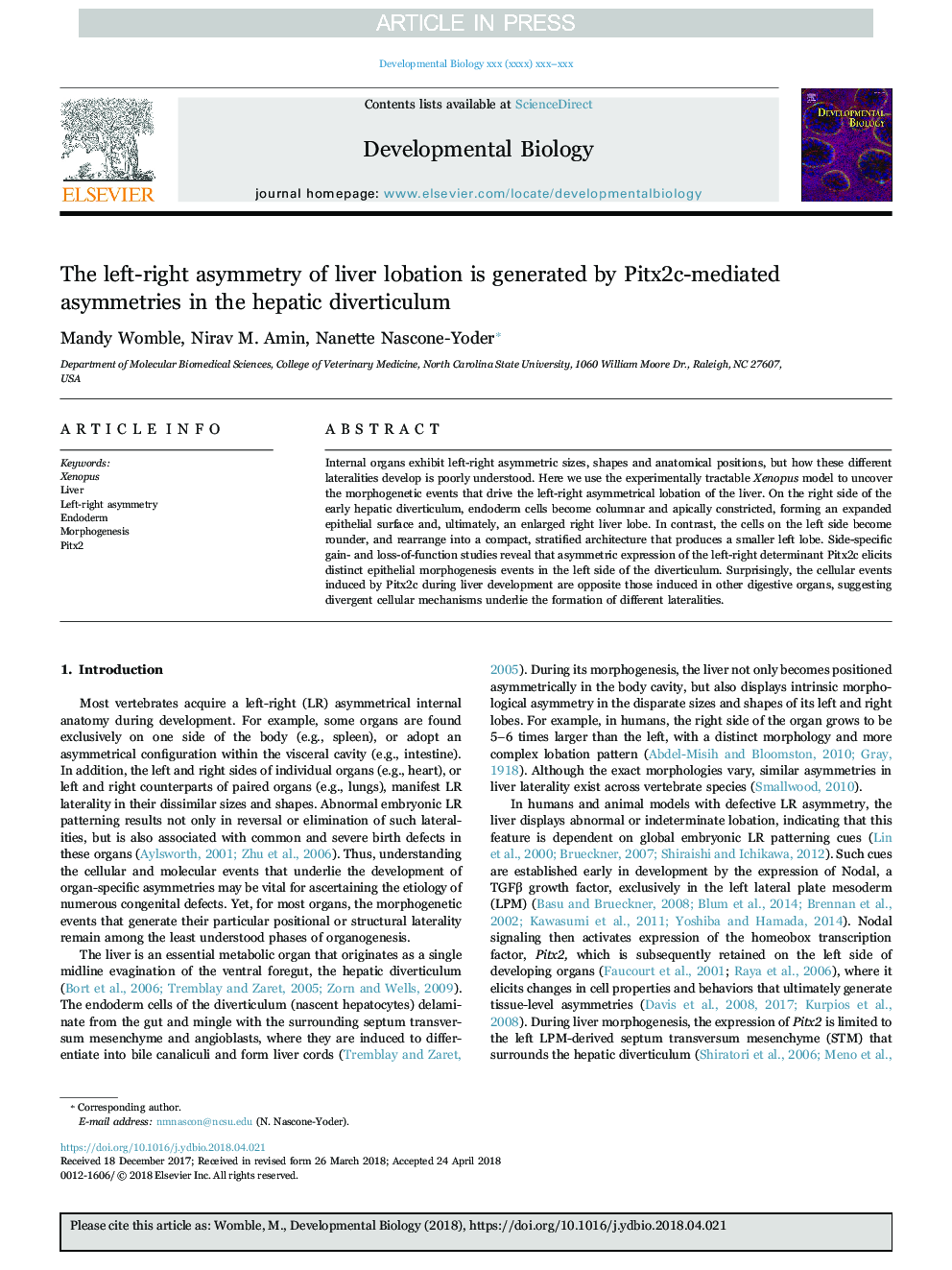| Article ID | Journal | Published Year | Pages | File Type |
|---|---|---|---|---|
| 8467211 | Developmental Biology | 2018 | 12 Pages |
Abstract
Internal organs exhibit left-right asymmetric sizes, shapes and anatomical positions, but how these different lateralities develop is poorly understood. Here we use the experimentally tractable Xenopus model to uncover the morphogenetic events that drive the left-right asymmetrical lobation of the liver. On the right side of the early hepatic diverticulum, endoderm cells become columnar and apically constricted, forming an expanded epithelial surface and, ultimately, an enlarged right liver lobe. In contrast, the cells on the left side become rounder, and rearrange into a compact, stratified architecture that produces a smaller left lobe. Side-specific gain- and loss-of-function studies reveal that asymmetric expression of the left-right determinant Pitx2c elicits distinct epithelial morphogenesis events in the left side of the diverticulum. Surprisingly, the cellular events induced by Pitx2c during liver development are opposite those induced in other digestive organs, suggesting divergent cellular mechanisms underlie the formation of different lateralities.
Related Topics
Life Sciences
Biochemistry, Genetics and Molecular Biology
Cell Biology
Authors
Mandy Womble, Nirav M. Amin, Nanette Nascone-Yoder,
